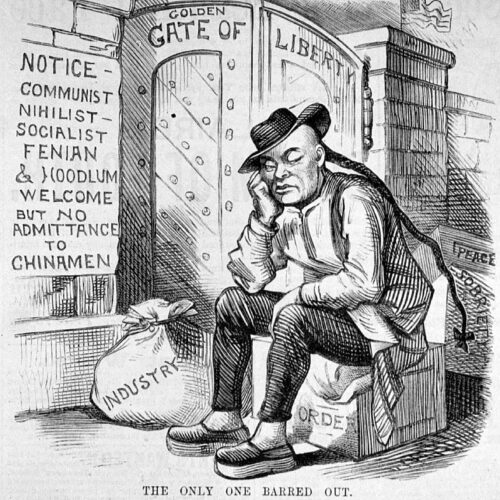Lessons
23 Souls, Big and Little: Early Jewish Arrivals in North America

State standards
Results
Length: 60-120 minutes | Grades: 6-12 | Themes: immigration, diaspora
Lesson Overview
Jewish people have been living permanently in North America since 1654, when the first group of Sephardic Jews arrived from Brazil. They were refugees, forced to flee after the Portuguese took control of a former Dutch colony and banned both Jews and Protestants. These early Jewish settlers were descendants of Jews who had been expelled from Spain and Portugal generations earlier, continuing a long search for a place to live and worship freely. Over the course of the 17th and 18th centuries, more Jewish families made their way to North America, establishing communities, building synagogues, and creating livelihoods, especially in growing port cities like New York, NY and Newport, RI.
This lesson invites students to explore the stories of some of the first Jewish communities in North America, while also asking bigger questions about how we remember the past. Students will look closely at how monuments shape our understanding of history and reflect the values of the society that creates them. Through discussion and creative thinking, they’ll consider whether early Jewish arrivals should be honored with a monument, and if so, what kind of story that monument should tell to matter today.
Enduring Understanding
In the 17th century, the first Jews–of Sephardic background–arrived in North America in order to escape religious persecution.
North America has served as a refuge for Jews seeking opportunities to practice Judaism openly, for more than a century prior to the establishment of the United States.
Essential Questions
What did colonial North America look like and who was inhabiting it?
When did the first Jews arrive in North America and what were the circumstances that brought them here?
Learning Objectives
Students will be able to explain the global forces that brought about the arrival of the first Jews to colonial North America, focused on the “push-pull” factors surrounding their migration.
Students will be able to compare the conditions that the earliest Jews in North America experienced relative to the conditions that they were seeking to escape through their migration.
Toolkit
-
Early Jewish Arrivals lesson plan
-
Early Jewish Arrivals slide deck
-
Early Jewish Arrivals handout





